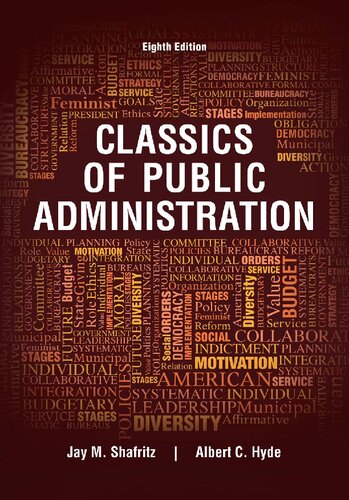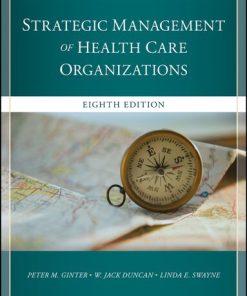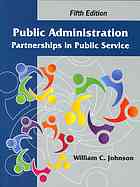Classics of public administration 8th Edition by Jay Shafritz, Albert Hyde 8214339726 9798214339726
$50.00 Original price was: $50.00.$25.00Current price is: $25.00.
Classics of public administration 8th Edition by Jay M. Shafritz, Albert C. Hyde – Ebook PDF Instant Download/DeliveryISBN: 8214339726, 9798214339726
Full download Classics of public administration 8th Edition after payment.

Product details:
ISBN-10 : 8214339726
ISBN-13 : 9798214339726
Author: Jay M. Shafritz, Albert C. Hyde
With this newly expanded eighth edition of CLASSICS OF PUBLIC ADMINISTRATION, authors Jay M. Shafritz and Albert C. Hyde introduce students to the principles of public administration via the most significant scholarly writings on the topic. Straightforward and informative, this text begins its discussion with Confucius in ancient China and continues to today’s political scientists. This edition includes 17 new readings and addresses the key fields of public administration: bureaucracy, organization theory, human resources management, the budgetary process, public policy, implementation, evaluation, intergovernmental relations, and public service ethics.
Classics of public administration 8th Table of contents:
Part I. Early Voices and the First Quarter Century
1. The Analects of Confucius
Translator’s Note Book 12
Book 13
Book 20
2. On Duties
3. Of the Principle of Utility
4. On War
VI. Information in War
VII. Friction in War
5. The Study of Administration
I
II
III
6. Politics and Administration
The Function of Politics
7. Problems of Municipal Administration
8. Scientific Management
9. The Movement for Budgetary Reform in the States
Introduction: Origin of Movement
10. Bureaucracy
1. Characteristics of Bureaucracy
2. The Position of the Official
11. Introduction to the Study of Public Administration
Chapter One: Administration and the Modern State
12. The Giving of Orders
Part II. The New Deal to Mid-Century
13. Bureaucracy and the Public Interest
14. Notes on the Theory of Organization
1. The Division of Work
2. The Co-ordination of Work
3. Organizational Patterns
15. Report of the President’s Committee on Administrative Management
The American Executive
Improving the Machinery of Government
The Foundations of Governmental Efficiency
Modernizing Our Governmental Management
The Purpose of Reorganization
The White House Staff
16. Bureaucratic Structure and Personality
17. A Theory of Human Motivation
I. Introduction
II. The Basic Needs
18. The Proverbs of Administration
Some Accepted Administrative Principles
An Approach to Administrative Theory
19. The Administrative State Revisited
On Origins and Reception
On Some Matters of Content: Notes for Revision
Part I. The Material and Ideological Background
Part: II The Good Life
Part III: Principles, Theory of Organization and Scientific Method
On The Agenda
20. Theory Y: The Integration of Individual and Organizational Goals
The Assumptions of Theory Y
The Principle of Integration
The Application of Theory Y
References
21. The Science of “Muddling Through”
By Root or by Branch
Intertwining Evaluation and Empirical Analysis (1b)
Relations between Means and Ends (2b)
The Test of “Good” Policy (3b)
Noncomprehensive Analysis (4b)
Succession of Comparison (5b)
Theorists and Practitioners
Successive Comparison as a System
Part III. From JFK to Civil Service Reform
22. The Road to PPB: The Stages of Budget Reform
The Functions of Budgeting
The Stages of Budget Reform
The Control Orientation
The Management Orientation
The Planning Orientation
What Difference Does It Make?
Conclusion
23. Organizations of the Future
Why Is Bureaucracy Vulnerable?
Change in Managerial Behavior
Core Organization Problems
Organizations of the Future
Training Requirements for Organizations of the Future
24. Policy Analysts: A New Professional Role in Government Service
Systems Analysis and Decision-Making
Possible Boomerang Effects
From Systems Analysis to Policy Analysis
Policy Analysts as Government Staff Officers
Some Implications
25. The Life Cycle of Bureaus
How Bureaus Come into Being
The Dynamics of Growth
26. Rescuing Policy Analysis from PPBS
Why Defense Was a Bad Model
No One Can Do PPBS
Incentives for Policy Analysis
27. Administrative Decentralization and Political Power
Current Dissatisfaction
More Representative Administrative Agencies
The Continuing Search for Leadership
Conflict and Coalition
The Subsequent Phase of the Cycle
28. The End of Liberalism: The Indictment
Summation I: Four Counts against the Ideology
29. Toward a New Public Administration
What Is New Public Administration?
Organization Theory and New Public Administration
Conclusions
30. Dilemmas in a General Theory of Planning
I. Goal Formulation
II. Problem Definition
III. Planning Problems are Wicked Problems
1. There Is No Definitive Formulation of a Wicked Problem
2. Wicked Problems Have No Stopping Rule
3. Solutions to Wicked Problems are Not True-or-False, but Good-or-Bad
4. There Is No Immediate and No Ultimate Test of a Solution to a Wicked Problem
5. Every Solution to a Wicked Problem Is a “One-Shot Operation”; because there Is No Opportunity to Learn by Trial-and-Error, every Attempt Counts Significantly
6. Wicked Problems Do Not Have an Enumerable (or an Exhaustively Describable) Set of Potential Solutions, nor Is There a Well-Described Set of Permissible Operations That May Be Incorporated into the Plan
7. Every Wicked Problem Is Essentially Unique
8. Every Wicked Problem Can Be Considered to Be a Symptom of Another Problem
9. The Existence of a Discrepancy Representing a Wicked Problem Can Be Explained in Numerous Ways. The Choice of Explanation Determines the Nature of the Problem’s Resolution
10. The Planner Has No Right to Be Wrong
IV. The Social Context
31. Systematic Thinking for Social Action
Decentralization
Community Control
The Market Model
Where Do We Go from Here?
32. The Implementation Game
Implementation as Pressure Politics
Implementation as the Massing of “Assent”
Implementation as an Administrative Control Process
The Implementation Process as Intergovernmental Bargaining
Implementation and the Complexity of Joint Action
The Implementation Process as a System of Games
33. Watergate: Implications for Responsible Government
Overview
Epilogue: Ethics and Public Office
34. Representative Bureaucracy
V. The Emergence of the Issue in American Society
VI. Conclusion and Summary
35. Intergovernmental Relations: An Analytical Overview
Gaining Force by Unusualness: The Distinctive Features of IGR
Phases of IGR
Conflict (pre-1937)
Cooperation (1933–1953)
Concentrated (1945–1960)
Creative (1958–1968)
Competitive (1965–?)
Concluding Comment
Part IV. From Reagan to Reinvention
36. Public and Private Management: Are They Fundamentally Alike in All Unimportant Respects?
Section 1 Framing the Issue: What Is Public Management?
Section 2 Similarities: How Are Public and Private Management Alike?
Section 3 Differences: How Are Public and Private Management Different?
Section 4 An Operational Perspective: How Are the Jobs and Responsibilities of Doug Costle, Director of EPA, and Roy Chapin, CEO of American Motors, Similar and Different?
Section 5 Implications for Research on Public Management
37. Street-Level Bureaucracy: The Critical Role of Street-Level Bureaucrats
Conflict over the Scope and Substance of Public Services
Conflict over Interactions with Citizens
38. Public Budgeting Amidst Uncertainty and Instability
The Changing Environment of Budgeting
The Quest for Budget Reform
Coping with Uncertainty and Instability
Conclusion
39. Public Administrative Theory and the Separation of Powers
The Managerial Approach to Public Administration
The Political Approach to Public Administration
The Legal Approach to Public Administration
The Separation of Powers
40. Agendas, Alternatives, and Public Policies
What Policy Windows are and Why they Open
Why Windows Open and Close
Perceptions, Estimations, and Misestimations
Coupling
Problem Windows and Political Windows
Seizing Opportunities
The General Importance of Coupling
41. The Possibility of Administrative Ethics
I. The Ethic of Neutrality
II. The Ethic of Structure
42. American Federalism: Madison’s Middle Ground in the 1980s
The Practice of Intergovernmental Relations: Shared Programs
The Role of the Courts
Current Debates
43. The Organizational Culture Perspective
Assumptions of the Organizational Culture Perspective
Research Bias of the Organizational Culture Perspective
Radical Change in Organizations
Conclusion
References
44. From Affirmative Action to Affirming Diversity
The Affirmative Action Cycle
Ten Guidelines for Learning to Manage Diversity
45. Toward a Feminist Perspective in Public Administration Theory
Feminist Theory
The Quest for Neutrality
The Model of the Ideal Public Servant
Administrative Discretion
The Administrative State
References
46. The Motivational Bases of Public Service
Theories of Public Service Motivation
Rational
Norm-Based
Affective
Behavioral Implications of Public Service Motivation
Research Implications
Conclusion
47. Managing State Government Operations: Changing Visions of Staff Agencies
Inventing a New Vision
The Bureaucratic Reform Vision
Taking Line Agency Performance Seriously
Elements of a Post-Bureaucratic Vision
A Strategy for Managing Staff Agencies
A Strategy for Control Activities: The Case of IPo
References
48. From Red Tape to Results: Creating a Government That Works Better and Costs Less
A Cure Worse Than the Disease
The Root Problem: Industrial-Era Bureaucracies in an Information Age
The Solution: Creating Entrepreneurial Organizations
Our Commitment: A Long-Term Investment in Change
49. Using Performance Measures in the Federal Budgeting Process
Performance Measurement in the Public Sector
Setting Objectives
Establishing Measures of Performance
Obstacles to Measuring the Performance of Federal Agencies
Defining Objectives
Problems in Developing Measures of Program Results
Federal Activities Are Varied and Often Difficult to Measure
Possible Obstruction by Participants
How can Performance Measurement Affect the Budget Process?
Allocation of Resources
Agency Management of Internal Resources
Financial Reporting
Conclusion
Part V. Public Administration in the Twenty-First Century
50. Information Technology and Democratic Governance
Historical Analogies
Centralization or Diffusion?
Three Trends
Political Effects of the Information Revolution
Political Choices
51. Unmasking Administrative Evil
In The Face of Administrative Evil
Necessary but Not Sufficient: The Technical-Rational Approach to Public Service Ethics
The Challenge of Administrative Evil
Globalization, the Corrosion of Character, and Surplus Populations
The Prospects for Reconstructing Public Ethics
Liberal Democracy
Putting Cruelty First
Deliberative Democracy
Cruelty, Deliberation, and Administrative Evil
References
52. The Ethics of Dissent: Managing Guerilla Government
Bureaucratic Politics
Organizations and Management
Ethics
References
53. Inside Collaborative Networks: Ten Lessons for Public Managers
Lesson 1: The network is not the only vehicle of collaborative management.
Lesson 2: Managers continue to do the bulk of their work within the hierarchy.
Lesson 3: Network involvement brings several advantages that keep busy administrators involved.
Lesson 4: Networks are different from organizations but not completely different.
Lesson 5: Not all networks make the types of policy and program adjustments ascribed to them in the literature.
Lesson 6: Collaborative decisions or agreements are the products of a particular type of mutual learning and adjustment.
Lesson 7: The most distinctive collaborative activity of all of the networks proved to be their work in public sector knowledge management.
Lesson 8: Despite the cooperative spirit and aura of accommodation in collaborative efforts, networks are not without conflicts and power issues.
Lesson 9: Networks have their collaborative costs, as well as their benefits.
Lesson 10: Networks alter the boundaries of the state only in the most marginal ways; they do not appear to be replacing public bureaucracies in any way.
Conclusion
References
54. Public Value: Theory and Practice : Conclusions
Changes in the Context of Governance and Public Service
The Revival of Government as A Value-Creating Institution
Operational Challenges to Government
Political/Legitimacy Challenges to Government
The Re-Emergence of the Social Consciousness of Interdependence
The Necessity of Social Institutions That Constrain Individuals
From Government to Governance
The Enduring Relevance of Public Value Theory
Public Value as A Guiding Concept For Government Officials and Other Public Leaders
Increasing Legitimacy by Linking Politics and Administration
Recognizing Public Value: Measuring Government Performance
Co-Production With Partners and Clients
Innovation in Programmes and Institutional Design
Calling A Public Into Existence: Administrative Politics and Community Consultation
Conclusion
People also search for Classics of public administration 8th:
jay shafritz classics of public administration
classics of public administration 8th edition
classics of public administration 8th edition pdf
classics of public administration 5th edition
classics of public administration pdf
Tags: Classics, public administration, Jay Shafritz, Albert Hyde
You may also like…
Politics & Philosophy
The Palgrave Handbook of Public Administration and Management in Europe 1st Edition Edoardo Ongaro
Politics & Philosophy - Government & Politics
Introduction to Governance, Government and Public Administration 1st Edition Franklin
History - Canadian History
Politics & Philosophy
Politics & Philosophy
The Politics of Public Administration Reform in Italy Sabrina Cavatorto
Politics & Philosophy - Social Sciences
Public administration partnerships in public service Fifth Edition. Edition Johnson
Politics & Philosophy












